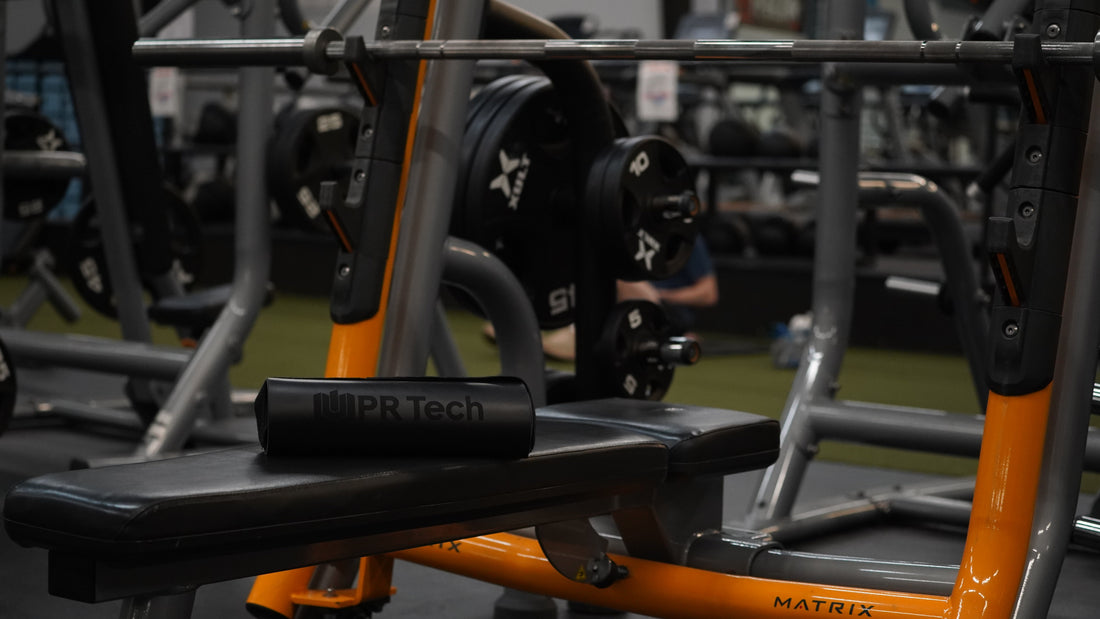
How to Prevent Injuries During Bench Press: Top Tips for Safer Lifting
Share
The bench press is one of the best exercises for building upper body strength, but it's also one of the most common causes of gym injuries. Whether you’re a beginner or an advanced lifter, proper form, grip, and equipment are essential to avoid injuries and improve performance.
In this guide, we’ll cover:
✅ Common bench press injuries and their causes
✅ Essential bench press safety tips
✅ The importance of proper grip and posture
✅ How the UPR Bench Bro™ improves workout bench stability
✅ Bonus tips for injury-free lifting
By following these tips, you’ll press heavier weights safely and reduce your risk of injury. Let’s dive in!
Common Bench Press Injuries and How They Happen
The bench press puts stress on various muscles, tendons, and joints, making injuries common. Below are the most frequent bench press injuries and their causes:
1. Shoulder Injuries (Rotator Cuff Strains & Tears)
🔹 Cause: Poor shoulder positioning, excessive weight, or incorrect range of motion.
🔹 Symptoms: Shoulder pain, reduced range of motion, weakness.
🔹 Prevention: Maintain scapular retraction (shoulder blades pulled back) and avoid lowering the bar too deep.
2. Elbow & Wrist Pain (Tendonitis & Strains)
🔹 Cause: Incorrect grip width, locking out elbows, or using too much weight.
🔹 Symptoms: Pain, stiffness, or inflammation in the wrists and elbows.
🔹 Prevention: Use a neutral grip (wrists aligned with forearms) and avoid overextending elbows.
3. Pec (Chest) Strains or Tears
🔹 Cause: Going too heavy without a proper warm-up or bouncing the bar off the chest.
🔹 Symptoms: Sharp pain in the chest, bruising, or a sudden “pop” sensation.
🔹 Prevention: Warm up properly and avoid excessive arching of the back.
4. Lower Back Strain
🔹 Cause: Overarching the lower back due to poor bench stability.
🔹 Symptoms: Lower back pain and discomfort after benching.
🔹 Prevention: Keep feet flat, engage your core, and use a non-slip grip mat like the UPR Bench Bro™.
5. Dropped Bar Injuries (Crushed Chest or Face)
🔹 Cause: Failing to control the bar, losing grip, or fatigue.
🔹 Symptoms: Serious injuries like broken ribs, facial trauma, or internal damage.
🔹 Prevention: Always use a spotter or safety pins and avoid lifting beyond your strength level.
Top Bench Press Safety Tips
1. Always Warm Up Properly
Before pressing heavy weights, your muscles, joints, and tendons need proper activation. A good warm-up includes:
✔ 5-10 minutes of dynamic stretching (arm circles, band pull-aparts)
✔ Lightweight warm-up sets to improve blood flow
✔ Rotator cuff exercises to protect the shoulders
2. Maintain the Right Grip
🔹 Too wide a grip? Puts excessive stress on your shoulders.
🔹 Too narrow a grip? Increases strain on the elbows and wrists.
🔹 Correct grip: Keep hands just outside shoulder-width for maximum stability and safety.
👉 Pro Tip: Use a non-slip bench mat like the UPR Bench Bro™ to prevent wrist instability and ensure a solid base for pressing.
3. Keep Your Feet Firmly Planted
Leg drive is essential in the bench press. Keep feet flat on the ground and push through your heels for better control. Avoid lifting your feet or moving them around during the press.
4. Use a Spotter or Safety Bars
🔹 Spotter: If you’re lifting heavy, always have a spotter ready to assist.
🔹 Safety pins or straps: If benching alone, use a power rack with adjustable safety pins to catch the bar if you fail a rep.
5. Avoid Bouncing the Bar Off Your Chest
Lower the bar in a controlled manner and avoid bouncing it off your chest—this can lead to rib injuries and poor muscle engagement.
6. Engage Your Shoulder Blades (Scapular Retraction)
To protect your shoulders and upper back, retract your shoulder blades and keep them tight against the bench. This stabilizes your press and reduces strain on the rotator cuff.
7. Use the Right Equipment: The Role of the UPR Bench Bro™

Many lifters suffer injuries due to slippery gym benches that cause instability. The UPR Bench Bro™ is a non-slip bench mat designed to:
✅ Eliminate sliding so you stay locked in position
✅ Enhance grip and stability for safer, stronger presses
✅ Improve posture by keeping your back and shoulders in place
✅ Provide hygiene benefits by acting as a barrier against sweat and bacteria
If you struggle with losing balance or shifting during lifts, investing in a grip-enhancing mat like the UPR Bench Bro™ is a smart move.
Final Thoughts
The bench press is a powerful exercise, but lifting smart is just as important as lifting heavy. By following these bench press safety tips, using proper grip and posture, and incorporating stability-enhancing equipment like the UPR Bench Bro™, you can press more weight safely and confidently.
🏋️♂️ Train hard, train smart, and stay injury-free!
FAQs
1. What is the most common injury from bench pressing?
Shoulder injuries, such as rotator cuff strains, are the most common due to improper form and excessive weight.
2. How can I make my bench press safer?
Use correct grip width, stable foot positioning, a spotter, and non-slip equipment like the UPR Bench Bro™ to prevent injuries.
3. Is arching my back bad for the bench press?
A small arch is fine, but excessive arching can strain your lower back. Keep your spine neutral and controlled.
4. Why does my wrist hurt when bench pressing?
Wrist pain usually comes from poor grip positioning. Ensure wrists are straight and aligned with forearms to reduce strain.
5. Should I use a non-slip bench mat for better stability?
Yes! A non-slip mat like the UPR Bench Bro™ improves traction, grip, and safety, reducing the risk of slipping and shifting during lifts.